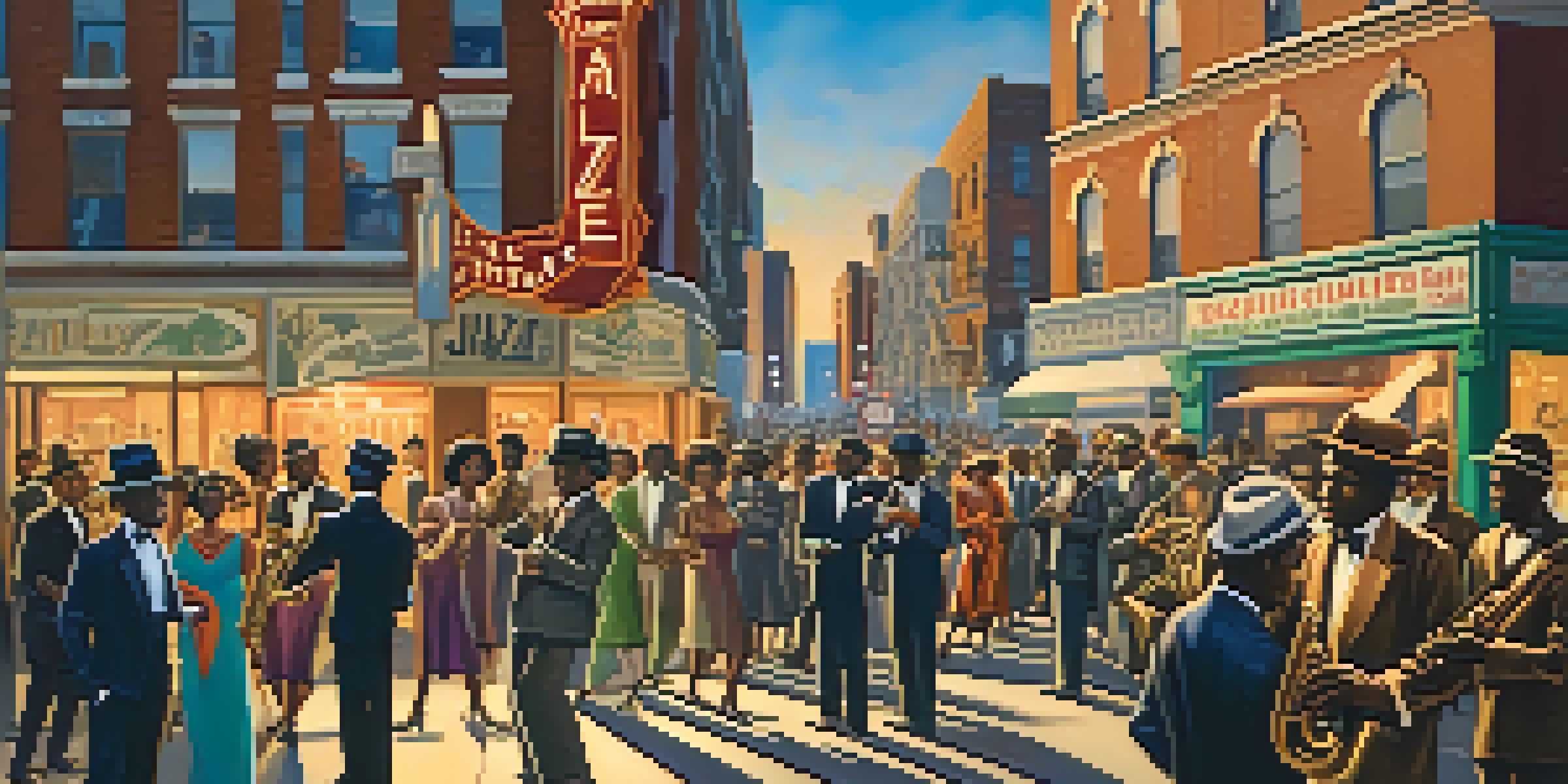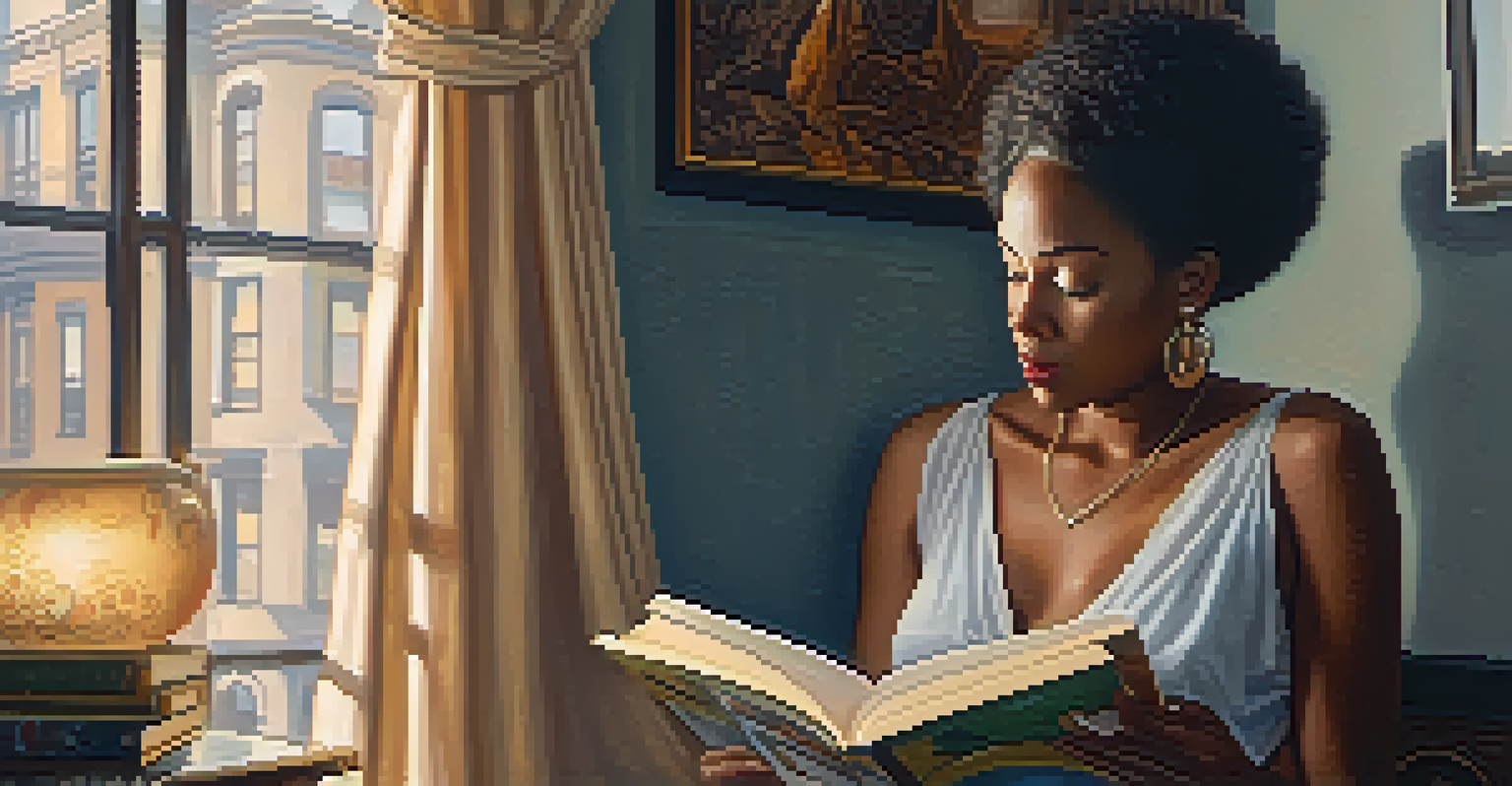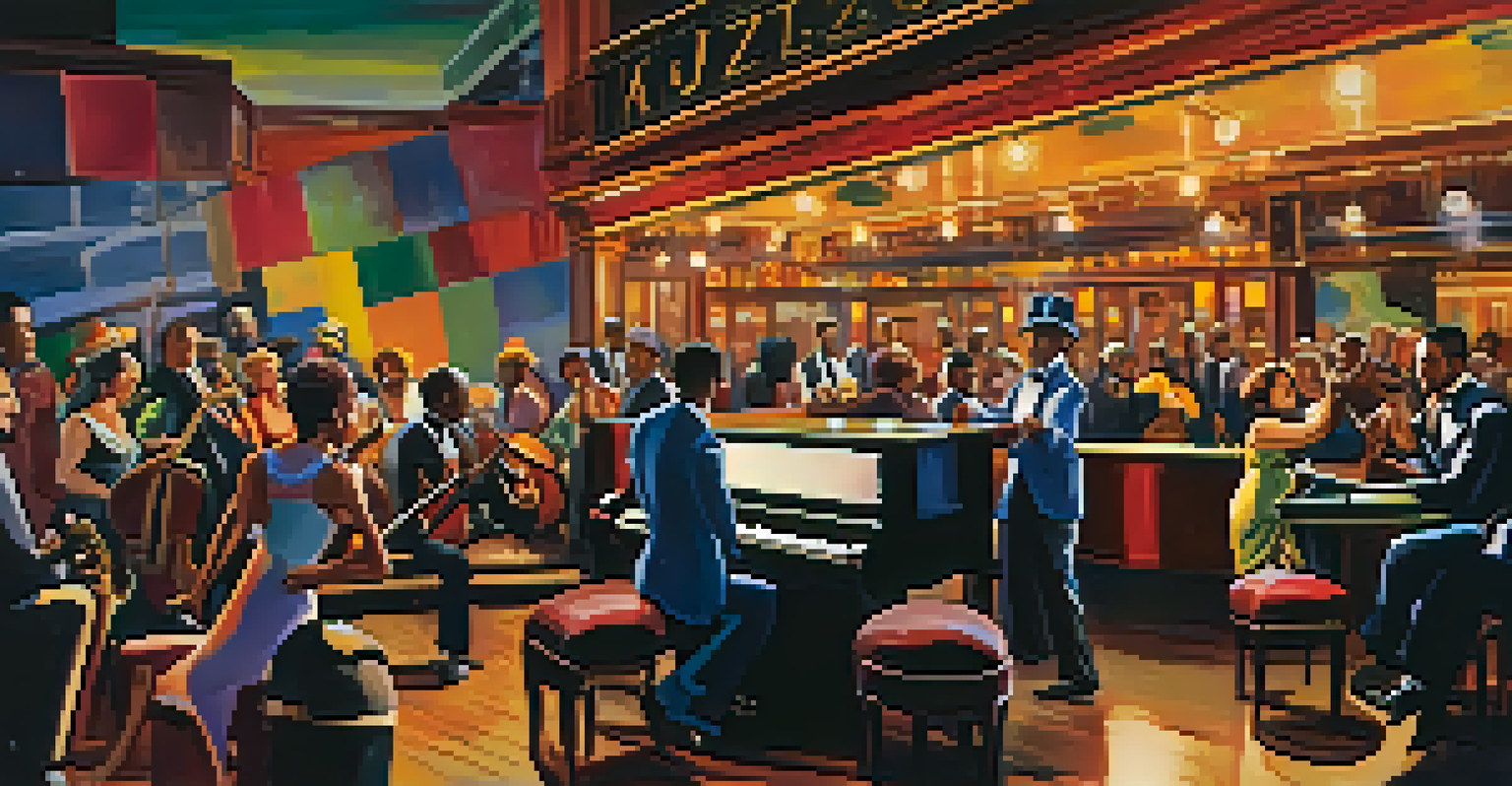The Harlem Renaissance: A Flourishing of African American Art

What Was the Harlem Renaissance?
The Harlem Renaissance was a cultural, social, and artistic explosion that took place in Harlem, New York, during the 1920s. It marked a significant period for African American artists, writers, and musicians, who found their voices and celebrated their heritage. This movement not only transformed Harlem but also reshaped American culture as a whole, showcasing the richness of Black life and creativity.
The Negro artist and the racial mountain.
Emerging after the Great Migration, when many African Americans moved to northern cities, the Renaissance was a response to the racial injustices and societal limitations faced by the Black community. Artists began to express their experiences and aspirations through various forms of art, creating a vibrant tapestry of literature, music, and visual arts. This period is often seen as a time of rebirth and empowerment for African Americans.
The Harlem Renaissance was about more than just artistic expression; it was also a political and social movement. It laid the groundwork for future civil rights efforts by encouraging a sense of pride and identity among African Americans. This flourishing of culture not only inspired those within the community but also captivated audiences nationwide, leaving a lasting legacy.
Key Figures of the Renaissance
The Harlem Renaissance was filled with influential figures who played pivotal roles in its development. Among them was Langston Hughes, a poet and social activist, whose works often reflected the struggles and joys of Black life. His poem 'The Negro Speaks of Rivers' beautifully illustrates the connection between African Americans and their rich history, emphasizing resilience and pride.

Another notable figure was Zora Neale Hurston, a writer and anthropologist, who celebrated Black culture through her novels and folklore studies. Her book 'Their Eyes Were Watching God' remains a classic, highlighting the strength and desires of Black women in a male-dominated society. Hurston's unique voice contributed significantly to the literary landscape of the era.
Cultural Flourishing in Harlem
The Harlem Renaissance was a vibrant cultural movement in the 1920s that celebrated African American arts, literature, and music.
Musicians like Duke Ellington and Louis Armstrong also emerged during this time, revolutionizing jazz and paving the way for future generations. Their innovative sounds and compositions brought the essence of African American culture to mainstream audiences, showcasing the profound impact of this artistic movement on music.
The Role of Literature
Literature was a cornerstone of the Harlem Renaissance, serving as a powerful medium for African American voices. Writers used their craft to address issues of race, identity, and social justice, creating a rich body of work that resonated with both Black and white audiences. This literary movement gave rise to a new generation of authors who challenged stereotypes and depicted the complexities of Black life.
I am not tragically colored. There is no great sorrow dammed up in my soul, nor lurking behind my eyes.
Poetry, in particular, flourished during this time, with poets like Claude McKay and Countee Cullen exploring themes of love, struggle, and hope. Their verses not only captured the essence of the era but also spoke to the universal human experience, bridging gaps between cultures. The emotional depth of their work continues to inspire readers today.
In addition to poetry, novels and essays played a crucial role in shaping the narrative of the Harlem Renaissance. Writers like Nella Larsen and Richard Wright tackled harsh realities and provided insights into the African American experience. Their contributions have left an indelible mark on American literature, making this period one of the most significant in literary history.
Music: The Heartbeat of the Renaissance
Music was the lifeblood of the Harlem Renaissance, with jazz emerging as a dominant form of expression. This genre, rooted in African American traditions, allowed musicians to showcase their creativity and improvisational skills. Venues like the Cotton Club and the Apollo Theater became cultural hotspots, drawing crowds eager to experience the vibrant sounds of jazz and blues.
Duke Ellington and Louis Armstrong were key figures who helped elevate jazz to new heights. Their innovative styles and charismatic performances captivated audiences, breaking down racial barriers and bringing Black culture to the forefront. Jazz became a symbol of freedom and creativity, reflecting the spirit of the Harlem Renaissance.
Influential Figures and Their Impact
Key figures like Langston Hughes and Zora Neale Hurston shaped the movement, using their talents to highlight the complexities of Black life and culture.
The influence of music during this era extended beyond entertainment; it served as a form of resistance against oppression. Songs often conveyed messages of hope and struggle, resonating with the challenges faced by the African American community. The rhythms and melodies of this period continue to inspire musicians and artists around the world.
Visual Arts: Painting a New Narrative
Visual arts played a significant role in the Harlem Renaissance, providing a platform for African American artists to express their identities and experiences. Artists like Aaron Douglas and Augusta Savage used their work to depict the richness of Black culture, often drawing inspiration from African heritage and traditions. Their bold colors and dynamic forms conveyed a sense of pride and resilience.
The Harlem Renaissance also saw the emergence of the Harlem Art Workshop, which provided a space for artists to collaborate and showcase their work. This community-oriented approach fostered creativity and encouraged experimentation, leading to a diverse range of artistic expressions. The visual arts became a vital part of the cultural dialogue during this time.
Moreover, the impact of the visual arts extended beyond Harlem, influencing broader artistic movements across the country. The works created during this period challenged societal norms and stereotypes, paving the way for future generations of artists. Today, the legacy of Harlem Renaissance artists continues to inspire and resonate within contemporary art.
Impact on Future Generations
The Harlem Renaissance had a profound impact on future generations of artists, writers, and musicians. It not only inspired the Civil Rights Movement but also laid the groundwork for subsequent cultural movements, such as the Black Arts Movement of the 1960s. The themes of identity, pride, and social justice explored during the Renaissance continue to resonate in today's artistic expressions.
Many contemporary artists draw inspiration from the works and experiences of Harlem Renaissance figures. From music to literature, the legacy of this era can be seen in the works of modern-day creators who strive to amplify Black voices and experiences. The Renaissance serves as a reminder of the importance of cultural expression in the fight for equality and representation.
Legacy of Empowerment and Change
The Harlem Renaissance laid the groundwork for future civil rights movements, emphasizing the importance of cultural expression in the fight for equality.
Furthermore, the Harlem Renaissance highlighted the significance of community and collaboration in the arts. The connections forged during this time remain vital today, as artists continue to support one another and foster creative spaces for expression. The spirit of the Renaissance lives on, encouraging future generations to celebrate their heritage and share their stories.
Legacy of the Harlem Renaissance
The legacy of the Harlem Renaissance extends far beyond its time period, influencing countless aspects of American culture and society. It marked a turning point in the representation of African Americans in the arts, challenging stereotypes and affirming the value of Black creativity. This cultural movement opened doors for future artists and paved the way for greater recognition of African American contributions to the arts.
Moreover, the Harlem Renaissance laid the foundation for ongoing discussions about race, identity, and social justice in America. The themes explored by artists and writers during this time continue to be relevant today, prompting reflection and dialogue about the lived experiences of Black individuals. Their work serves as a powerful reminder of the resilience and strength of the African American community.

As we celebrate the Harlem Renaissance, it's essential to recognize its enduring impact on contemporary culture. The movement's influence can be seen in modern literature, music, and art, as artists draw on its rich history to create new narratives. The Harlem Renaissance remains a vital part of the American story, reminding us of the importance of art in shaping our understanding of identity and community.